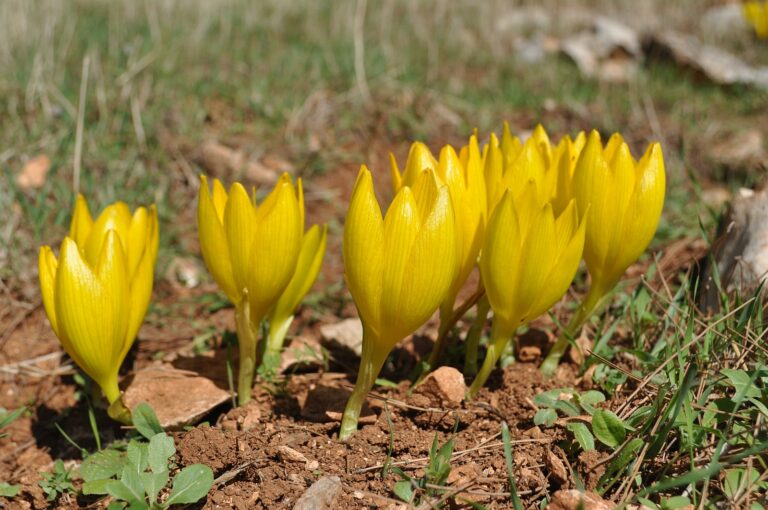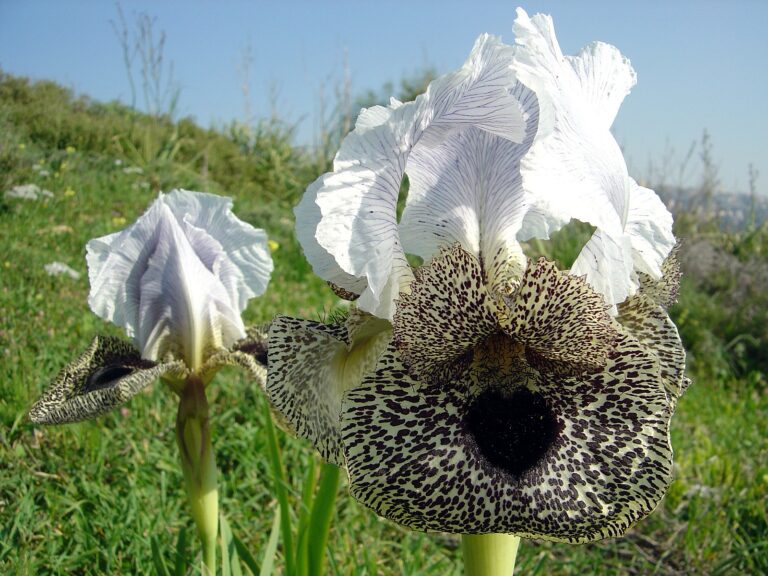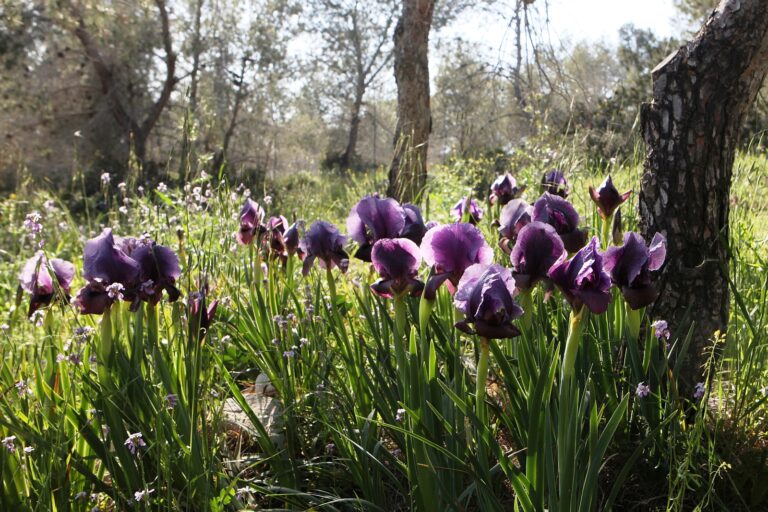Blooming flowers are not the first thing that springs to mind when thinking of Israel’s desert. But come winter, what we imagine to be dry, arid land fills with colorful blossoms and plenty of spots to enjoy nature at its finest.
The waves of flowers blooming one after the other in winter can be best viewed in the northern parts of Israel’s Negev, and ISRAEL21c caught up with Gil Siaki, the head of the Keren Kayemeth LeIsrael-Jewish National Fund (KKL-JNF) afforestation division in the southern region, to get the lowdown on what to see when and where.
“The first flowers to arrive, before you even begin thinking of rainfall, is the squill. We have lots of spots across the Negev with squill blossoms,” he tells ISRAEL21c.

“Immediately after that we have the winter daffodil blossoms. These are amazing flowers – this sort of big yellow cup that blossoms without leaves, which only pop up later. These, too, blossom long before the rain, in October. We have large concentrations in Lahav Forest and Yatir Forest, where the foresters and the wider public await them.”

After the amazing winter daffodils come the regular daffodils in Israel’s northern desert forests, such as Amatzia, Lachish and Guvrin. This year, they blossomed only briefly due to the late rainfall.

In December and January, cyclamens make their appearance, Siaki says.

“The cyclamens have already started budding around Kiryat Gat and Guvrin. There are carpets of cyclamens whose leaves are now already on display, and soon we’ll be able to see them.”

Anemones turn the South red
Anemones, perhaps southern Israel’s most celebrated flowers, are next in line.
“The anemones begin flowering in January, especially in the western Negev, where there they carpet the ground in large numbers,” Siaki says.

“The anemones also give their name to Darom Adom (Red South), when crowds of people go down south to view this amazing spectacle of endless anemones.”
In addition to the western Negev, Siaki recommends coming to see the anemones in Dvira Forest of the southern Judean foothills.

“Each person can adapt the nature of their visit to what they like. Some people prefer to focus on more crowded areas. Others prefer to walk through the forest and see a flower here and there. Seeing a single flower inside the forest is no less impressive than seeing the carpets of flowers.”
Majestic irises
And finally, right when winter turns to spring, irises bloom across the region in majestic shades of blue, purple and white.

Siaki says that the KKL-JNF maps many different types of irises, including an endangered species in Dudaim Forest near Beersheva, as part of its conservation efforts.

“All these nature assets are very important to us. In ecological surveys that we conduct in all forests ahead of any work, such as thinning and removal of dead trees, we find many rare species on the verge of extinction. We map them and look after them,” he says.

Asked for his personal favorite spot to view flowers, Siaki deliberates before choosing Goral Hills, just north of Beersheva.
In this savannah-style setting, there are sparse plantings of acacia trees, Christ’s thorn jujube trees and Atlantic pistachio trees.
“This sort of planting allows native, grassy fauna to develop, and the combination of the different tree types together with the grass and the iris blossoms is absolutely amazing,” says Siaki.
He has a much easier time naming his favorite flower.
“Winter daffodils,” he says readily. “They’re just so impressive. They have this sort of power, this bright, strong yellow color.”

















